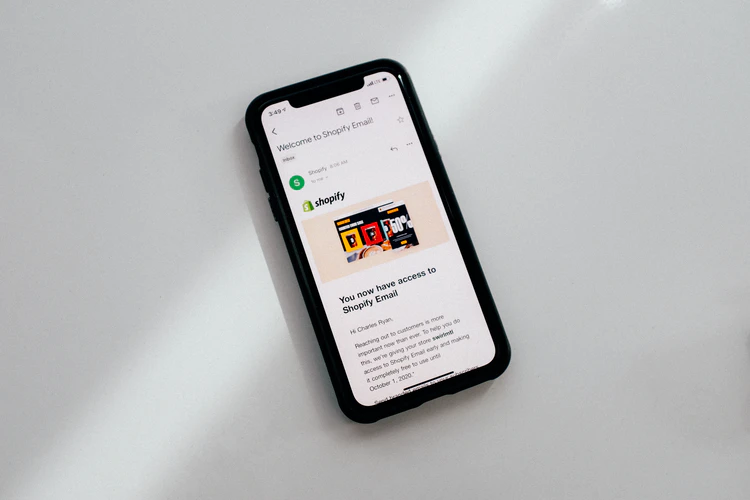- Products
- ProspectSQL/MQL list building with high levels of personalization, real-time data enrichment and prospect search
- Email FinderFind individual or bulk emails by entering the person & company name or domain
- Email VerifierVerify emails addresses individually, in bulk or through API, with 99% accuracy
- Clearout For SheetsVerify email addresses directly on Google Sheets with Clearout for sheets add-on
- ClearoutPhoneValidate phone numbers across 240+ countries in bulk, quick or real time validation Free Tools
- Disposable Email Checker
- Reverse LinkedIn Profile Lookup Tool
- Reverse Email Lookup Tool
- Email List Cleaner
- Resource
- Pricing
- Integrations
- Enterprise
- Login
13 Common E-commerce Email Marketing Mistakes to Avoid
When you have an e-commerce site, establishing a connection with your customers and target audience is essential. Luckily, you can use your email to achieve this.
In case you do not know, approximately 92% of adults use email. And 62% of them use it almost daily.
However, creating an effective email marketing strategy doesn't just come overnight. You need to put in the time, hard work, and dedication to achieve your desired results.
In this post, we'll talk more about the most common e-commerce email marketing mistakes that you need to avoid.
In case you do not know, approximately 92% of adults use email. And 62% of them use it almost daily.
However, creating an effective email marketing strategy doesn't just come overnight. You need to put in the time, hard work, and dedication to achieve your desired results.
In this post, we'll talk more about the most common e-commerce email marketing mistakes that you need to avoid.
Not Sending Any Welcome Emails

The most common mistake many e-commerce stores make is not sending welcome emails to their new subscribers. Disregarding welcome emails as part of your campaign strategy is a missed opportunity.
Welcome emails help you establish a relationship with your new subscribers. More so if they engaged with your brand.
Without that "Thank you for signing up" email, your brand can become too impersonal. This can discourage potential customers from being loyal to your business.
People will feel that you are only trying to sell your products to them. When, in fact, what they need is to trust you first before making a transaction.
And speaking of establishing trust with your prospective customers, the best email marketing tools can help you.
Welcome emails help you establish a relationship with your new subscribers. More so if they engaged with your brand.
Without that "Thank you for signing up" email, your brand can become too impersonal. This can discourage potential customers from being loyal to your business.
People will feel that you are only trying to sell your products to them. When, in fact, what they need is to trust you first before making a transaction.
And speaking of establishing trust with your prospective customers, the best email marketing tools can help you.
Ignoring Mobile Experience
According to the data by Constant Contact, 62% of email subscribers open their mail using a smartphone or mobile device.
That's why having a mobile-friendly email design isn't just a thing. It's already a requirement.
If your email isn't optimized for mobile devices, no matter how engaging or relevant your message is, your recipients are less likely to open it.
Remember that what looks great on a desktop won't necessarily look good in a mobile device.
So, before sending them, make sure that you roll out a couple of test emails first to check if your email is compatible with mobile.
That's why having a mobile-friendly email design isn't just a thing. It's already a requirement.
If your email isn't optimized for mobile devices, no matter how engaging or relevant your message is, your recipients are less likely to open it.
Remember that what looks great on a desktop won't necessarily look good in a mobile device.
So, before sending them, make sure that you roll out a couple of test emails first to check if your email is compatible with mobile.
Missing CTAs
Another common mistake when creating your own e-commerce site is skipping CTAs or call-to-action buttons.
Remember that the key to success in your email marketing campaigns will depend on the conversions you generate.
Missing out a CTA may potentially cause you thousands of dollars. The last thing that you want to happen is for your sales and revenue to be compromised.
That's why testing is vital. That way, you can catch these errors and make necessary adjustments where it's needed.
Remember that the key to success in your email marketing campaigns will depend on the conversions you generate.
Missing out a CTA may potentially cause you thousands of dollars. The last thing that you want to happen is for your sales and revenue to be compromised.
That's why testing is vital. That way, you can catch these errors and make necessary adjustments where it's needed.
No Personalization
Whenever a subscriber receives an email that says a generic hi or hey there, it feels like the mail is not meant for them.
Chances are, if it doesn't talk directly to them, they will ignore it.
That's why when sending out emails, make sure that you include the person's name. It shouldn't be limited with just their name as well.
Personalization can include anything on the content that you curate for your audience.
When you address them in a more personal tone and a personalized CTA, they will engage with your brand. Check out the ways on how to grow your email list.
Chances are, if it doesn't talk directly to them, they will ignore it.
That's why when sending out emails, make sure that you include the person's name. It shouldn't be limited with just their name as well.
Personalization can include anything on the content that you curate for your audience.
When you address them in a more personal tone and a personalized CTA, they will engage with your brand. Check out the ways on how to grow your email list.
Sending Too Many Emails
Just because someone has subscribed to your email list doesn't permit you to spam them.
Keep in mind that an average user who works in an office reads approximately 121 emails per day.
That's why it's no longer surprising that the number one reason why many people unsubscribe from email lists is that they get too many messages.
If you send them too many emails, they would quickly become annoyed with you. You don't want them to associate your website or brand with those feelings, right?
Your main goal is for people to be happy that they've received a message from you, not annoyed. So, we suggest that you limit your posts at least once a week.
Keep in mind that an average user who works in an office reads approximately 121 emails per day.
That's why it's no longer surprising that the number one reason why many people unsubscribe from email lists is that they get too many messages.
If you send them too many emails, they would quickly become annoyed with you. You don't want them to associate your website or brand with those feelings, right?
Your main goal is for people to be happy that they've received a message from you, not annoyed. So, we suggest that you limit your posts at least once a week.
Sending Without Permission
Sending emails to people who haven't signed up in your email list is a surefire way to garner a negative reputation.
There are a lot of repercussions that could happen when you send emails without their permission.
For instance, if you have customers that fall under the GDPR, then getting their permission first is necessary. Violating the regulations of the GDPR can result in costly fines.
There are a lot of repercussions that could happen when you send emails without their permission.
For instance, if you have customers that fall under the GDPR, then getting their permission first is necessary. Violating the regulations of the GDPR can result in costly fines.
Too Long Emails
Most brands and businesses will often write newsletters that are too long.
Your subscribers wouldn't appreciate it if it would take them a while to scroll past.
These emails will most often be quite long because of your content and CTAs as if cramming everything in a single newsletter.
That's why you must keep your message clear and concise.
If you have several products or offers that you want to talk about, you can break it up in multiple emails instead of sending a lengthy one.
That way, your subscribers could digest the content of your email better. And they're more likely going to follow through with the CTA as well.
Your subscribers wouldn't appreciate it if it would take them a while to scroll past.
These emails will most often be quite long because of your content and CTAs as if cramming everything in a single newsletter.
That's why you must keep your message clear and concise.
If you have several products or offers that you want to talk about, you can break it up in multiple emails instead of sending a lengthy one.
That way, your subscribers could digest the content of your email better. And they're more likely going to follow through with the CTA as well.
Being Overly Promotional
Sending promotional content in your emails does have its drawbacks.
To keep things fresh, you can use user generated content, downloads, guides, and multi-media.
Keep in mind that every business is different. It's crucial to evaluate your content so that your customers will find it more useful. Apart from that, your brand should aim to provide value as well.
- Your audience will either tune you out or unsubscribe.
- They won't purchase your items at the full price because they know that there will be promotion sooner or later.
To keep things fresh, you can use user generated content, downloads, guides, and multi-media.
Keep in mind that every business is different. It's crucial to evaluate your content so that your customers will find it more useful. Apart from that, your brand should aim to provide value as well.
Avoiding Text Links
If you think there's no need to include text links in your emails, you're wrong.
As we've mentioned previously, not every email should be promotional. Sometimes, these could be in the form of guides, videos, and a lot more.
In the same way, incorporating text links in your emails allows you to gain the highest number of clicks.
If you're not utilizing an HTML email design, you might want to integrate text links in your emails to receive accurate results.
As we've mentioned previously, not every email should be promotional. Sometimes, these could be in the form of guides, videos, and a lot more.
In the same way, incorporating text links in your emails allows you to gain the highest number of clicks.
If you're not utilizing an HTML email design, you might want to integrate text links in your emails to receive accurate results.
Not Prioritizing Sign-Ups
Remember that your email campaigns will only be useful for people who have signed up on your subscriber list.
It won't matter whether you have excellent content, the perfect CTA, or have a professional design. If you only have 50 people to send it to, you won't get your desired results.
Most email lists aren't built overnight, and it requires your time, dedication, and effort.
That's why prioritizing sign-ups is something that you should also be working at.
It won't matter whether you have excellent content, the perfect CTA, or have a professional design. If you only have 50 people to send it to, you won't get your desired results.
Most email lists aren't built overnight, and it requires your time, dedication, and effort.
That's why prioritizing sign-ups is something that you should also be working at.
Not Running Tests Before Sending
Another email marketing mistake that you can make is not testing your emails before sending them.
Before launching your email campaign, you have to test it with your team first. MailChimp, for instance, does not allow you to pre-visualize your content. But this tool also allows you to send your email first to yourself to test.
Also, before sending your emails, here are the most critical elements that you need to check:
Validation allows you to send a professional email to your audience.
Before launching your email campaign, you have to test it with your team first. MailChimp, for instance, does not allow you to pre-visualize your content. But this tool also allows you to send your email first to yourself to test.
Also, before sending your emails, here are the most critical elements that you need to check:
- Broken links: Are all links functioning correctly?
- Missing/wrong links: Did you miss out including a link or misplace a link instead?
- Typos: Even if you think you have excellent grammar, you might unknowingly commit a typo.
- Social icons: Most email templates include social icons. So make sure that they are working correctly.
- Images: Did you add pictures, and are they loading correctly?
Validation allows you to send a professional email to your audience.
Mistimed Messages
Mistimed messages are like missing the boat when it comes to timing your messages. Doing so can help you get an optimal effect.
Emails offering promotions can unlock significant revenue, but timing plays the protagonist here.
Similarly, cart abandonment emails not only help you salvage your sales. It also provides you with input to improve your process and decrease your cart abandonment rates moving forward.
Emails offering promotions can unlock significant revenue, but timing plays the protagonist here.
Similarly, cart abandonment emails not only help you salvage your sales. It also provides you with input to improve your process and decrease your cart abandonment rates moving forward.
Making Emails Complicated
Having one clear call-to-action will require little thought from your readers. They could either take action on your email or they don't.
If it's relevant, then they're likely going to take action. Call-to's allows you to generate more website visits, sign-ups, and, ultimately, sales.
However, if you provide several offers in your email, it will require more thought from your customers.
The more complicated your emails are, the more stressed they become. The less they're likely going to buy.
That's why keeping things simple is the key to email marketing. A clear and relevant link to a single landing page makes it easier for customers to purchase.
If it's relevant, then they're likely going to take action. Call-to's allows you to generate more website visits, sign-ups, and, ultimately, sales.
However, if you provide several offers in your email, it will require more thought from your customers.
The more complicated your emails are, the more stressed they become. The less they're likely going to buy.
That's why keeping things simple is the key to email marketing. A clear and relevant link to a single landing page makes it easier for customers to purchase.
Final Thoughts
Working on an effective e-commerce email marketing campaign is crucial for your business' growth. When used correctly, this can help you scale your business, have repeat customers, and generate more sales.
If you don't, prospects could quickly get frustrated and leave your site in favor of your competitors.
So, it helps that you follow the tips that we have mentioned in this post. Avoid these mistakes and make the most out of your email marketing campaign.
If you don't, prospects could quickly get frustrated and leave your site in favor of your competitors.
So, it helps that you follow the tips that we have mentioned in this post. Avoid these mistakes and make the most out of your email marketing campaign.
Recent Posts
01 Jul 2025
Best Zoho CRM Integrations for Sales & Marketing in 2025
Discover the top Zoho CRM integrations in 2025 categorized by use case. Explore how each tool's key ...
01 Jul 2025
Sales Automation in 2025: The Guide to Close More Deals Faster
Struggling with manual sales workflows? Follow this guide to explore the sales automation use cases, ...
25 Jun 2025
Top 6 Email Finder APIs in 2025 for All Use Cases
Looking for a reliable Email Finder API? Explore the top 6 email finder APIs of 2025—compare key fea ...
17 Jun 2025
Top 10 Email Spam Checker Tools Tested & Reviewed (2025)
Check out the top 10 email spam checker tools to avoid junk folders. Compare features, ratings & use ...
06 Jun 2025
How To Create a Lead Magnet That Converts in 2025
Looking for more leads? Read how to create a high-converting lead magnet in 2025 with step-by-step g ...
Prospecting ,Email Finder & Email Verification Service
Prospecting ,Email Finder & Email Verification Service
Expand your reach by discovering and verifying the ideal prospects.
Sign up & get 100 free credits | No Credit Card required



